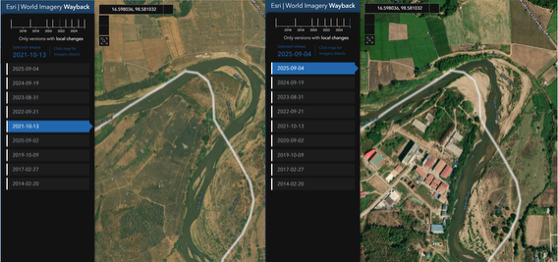Strength lies in unity. And nowhere is that statement more true than when it comes to fighting transnational organized crime. The BioCatch Threat Talk Live series brings together leaders across the public and private spheres to discuss challenges in the fight against fraud and money laundering and find ways to improve our collective response.
Next stop: Stockholm, Sweden, the city built on 14 islands (did you know that?).
We will be joined in Stockholm by guest speaker, Matt O’Neill, former Managing Director of the U.S. Secret Service Global Cyber Investigative Operations, who has led multiple international investigations. His efforts have led to numerous multinational takedowns of cryptocurrency money laundering operations and dark web marketplaces and the arrest of some of the most notorious cybercriminals.
We recently had a chance to sit down with Matt and asked him to give us a sneak preview of what he will be discussing in his session. Here is part of our conversation.
What will be the focus of your discussion with fraud analysts in the banking sector regarding the landscape of criminal organizations?
O’Neill: I will emphasize the increasing financial losses incurred by financial institutions due to sophisticated criminal gangs operating globally. Specifically, I will address the critical need for enhanced collaboration and communication between financial institutions and law enforcement agencies to effectively combat transnational criminal activities and mitigate the growing threat of cyber-enabled fraud. It is crucial for bankers to understand the evolving criminal gang landscape and the imperative role of collaboration in tackling these complex challenges.
Why do you think Scandinavian bankers need to learn more about transnational financially motivated criminal organizations?
O’Neill: Scandinavian bankers need to remain alert about sophisticated transnational criminal organizations specializing in cyber-enabled fraud for several key reasons:
1. Global Reach: Transnational criminal groups operate across borders, making it essential for Scandinavian bankers to understand the international nature of cyber fraud and its potential impact on local financial institutions.
2. Complex Techniques: These criminal organizations employ advanced tactics, such as social engineering, malware attacks, and phishing schemes, which require a deep understanding of cybersecurity measures and fraud detection protocols to effectively combat.
3. Financial Sector Vulnerabilities: Banks are prime targets for cybercriminals due to the large volumes of sensitive financial data they possess. Being aware of the strategies employed by transnational criminal groups can help bankers identify vulnerabilities within their systems and processes.
4. Collaborative Efforts: By understanding the modus operandi of transnational criminal groups, bankers can actively participate in collaborative efforts with law enforcement agencies, cybersecurity experts, and industry partners to enhance fraud prevention strategies and protect the banking sector as a whole.
What are transnational organized criminal (TOC) groups focused on?
O’Neill: Transnational organized crime groups engage in various forms of fraudulent activities, including but not limited to:
1. Cybercrime: TOC groups utilize sophisticated cyber tactics to conduct online fraud, such as phishing scams, ransomware attacks, and data breaches to steal personal and financial information.
2. Financial Fraud: These criminal organizations engage in financial fraud schemes such as money laundering, crypto and traditional investment scams, and identity theft to gain illicit profits and launder money through the financial system.
3. Payment Card Fraud: TOC groups often target payment card systems for fraudulent activities, including card skimming, card cloning, and card-not-present fraud, leading to significant financial losses for individuals and institutions.
4. Corruption: TOC groups may engage in corruption by bribing officials, manipulating business transactions, and exploiting loopholes in regulatory systems to facilitate fraudulent activities and evade law enforcement scrutiny.
What should we know about how TOC groups operate?
O’Neill: These groups are extremely complex, but the most menacing networks often exhibit the following characteristics:
They are adaptive. These networks demonstrate exceptional agility in adjusting their criminal operations to seize opportunities and overcome challenges, including those presented by law enforcement. They skillfully infiltrate and exploit legal business structures, enabling them to thrive, launder illicit profits, and evade detection. 86% of the most formidable criminal networks leverage legal business structures, primarily within the EU.
They are transnational. Operating without borders, the most threatening criminal networks conduct criminal activities spanning multiple countries. Comprising a diverse international membership from various EU nations and beyond, these networks represent 112 nationalities among the 821 most dangerous entities, with 68% having members from different countries. Despite their global reach, their core activities largely maintain a geographically concentrated focus.
They are authoritative. High-risk criminal networks maintain a strong grip and strategic concentration over their illicit operations. Typically specializing in a single core criminal enterprise, they prioritize focused control. Truly multipurpose criminal networks are rare, with 82% of the most menacing networks led from either the primary operational country or the members' country of origin.
They are detrimental. The criminal behaviors and corrupt practices of these top-tier criminal networks pose severe threats to the EU's internal security, legal frameworks, and economy. Half of these networks engage significantly in drug trafficking, while over 70% partake in corruption to aid illicit activities or impede law enforcement and legal processes. Additionally, 68% of these networks resort to violence and intimidation as integral components of their operational strategies.
Interested in attending? Reserve your spot now for our upcoming Threat Talk Live on 19 September in Stockholm. This is a session you do not want to miss.




